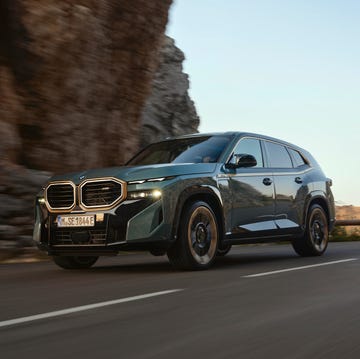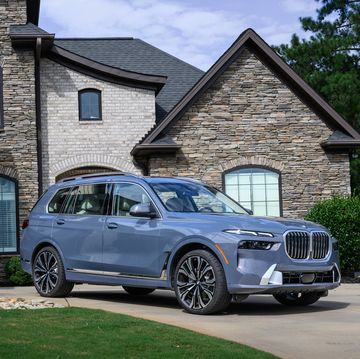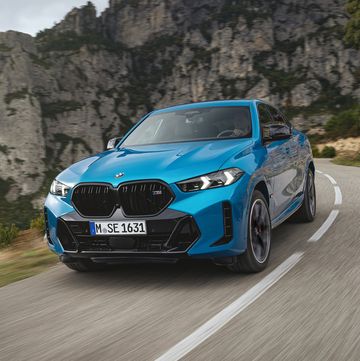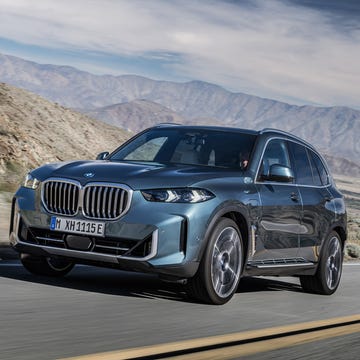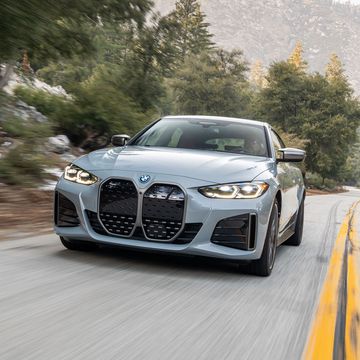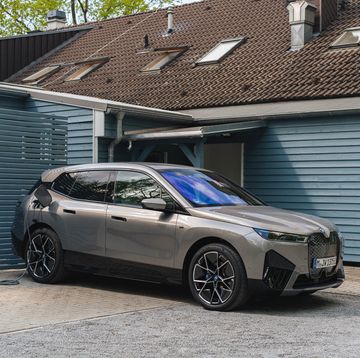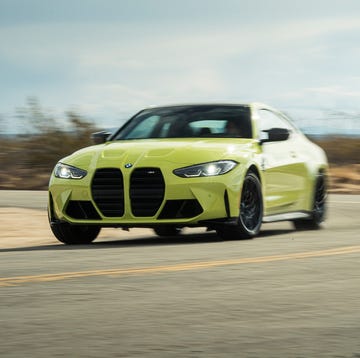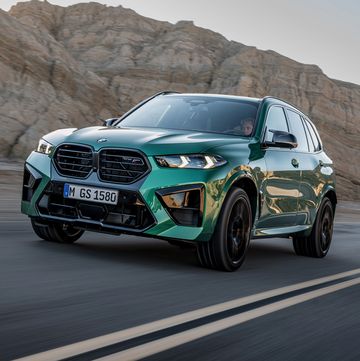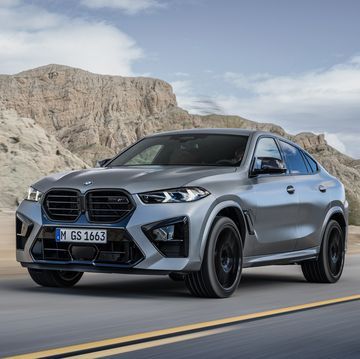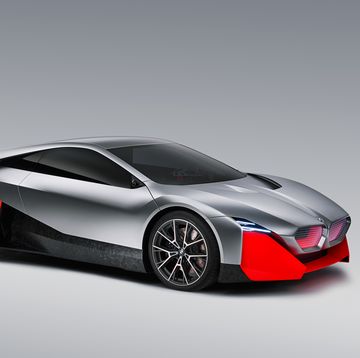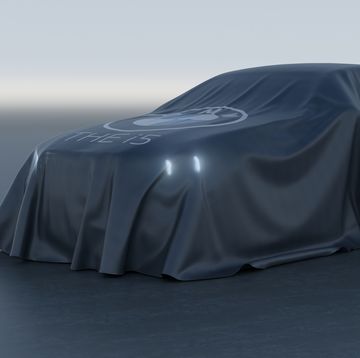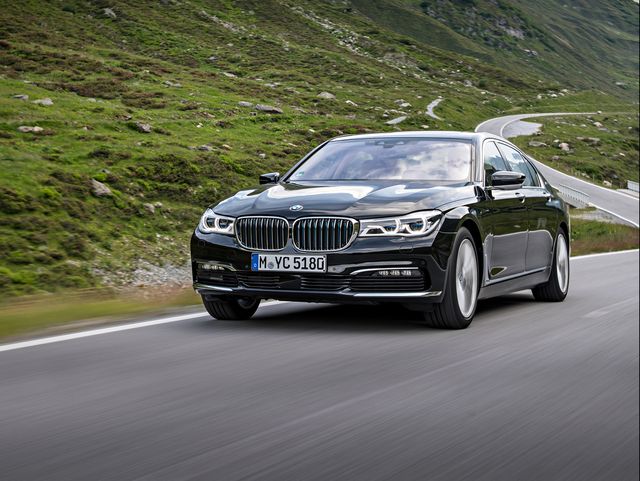
Select a year
- Highs Classic BMW handsomeness, excellent engines, quiet interior.
- Lows Gimmicky interior tech, Ultimate Driving Machine character absent (again).
- Verdict Neither more luxurious nor more sporting than rivals, the 7 succeeds mainly at being expensive.
Overview
As luxury limos go, the 2019 BMW 7-series is a roomy and stylish option, but it doesn't provide the stirring driving dynamics of its predecessors—a trait that once defined BMW's largest sedan. Under its lengthy hood, the 7-series can feature a range of buttery-smooth turbocharged engines, from the base 3.0-liter inline-six to the 6.6-liter V-12 in the M760i; a plug-in hybrid powertrain is also offered that delivers up to 14 miles of electric-only range. In addition to the usual luxury-car features, the 7-series offers tons of tech, including optional semi-autonomous driver-assistance tech and a nearly full suite of infotainment gadgetry. Plus, its classically handsome exterior ensures you'll be arriving in style for years to come.
What's New for 2019?
The 2019 7-series sees no major changes but BMW has already unveiled a facelifted 2020 model with bolder front styling and revised equipment and content.
Pricing and Which One to Buy
Among the available 7-series models, which range in horsepower from 320 to 601, we'd advocate for the base 740i and its silky-smooth and plenty powerful turbocharged 3.0-liter inline-six. The 740i comes standard with plenty of features, including an air suspension, power-adjustable heated front seats, a Harman/Kardon audio system, and touchscreen infotainment with navigation. We'd happily pay for the Cold Weather package, which adds heated rear seats and a heated steering wheel, and we'd spring for the Driving Assistance Plus package. It adds adaptive cruise control, full-speed automated emergency braking, traffic-jam assist with active steering, and lane-keeping assist.
Engine, Transmission, and Performance
Likes: Zippy base six-cylinder, monstrous 601-hp range-topping model, placid ride.
Dislikes: 750i's V-8 hardly outaccelerates the base inline-six, lacks traditional BMW athleticism.
Topping the 7-series' short list of highlights are its engines and transmissions. Every single one, from the 740i's 320-hp turbocharged inline-six to the 740i's 320-hp turbocharged inline-six to the M760i's insane 601-hp twin-turbo V-12, is velvety smooth and feels more muscular than its official horsepower figures indicate. Even the 740e plug-in's combination of a turbocharged four-cylinder engine and an electric motor is powerful and manages to drive with a natural, gasoline-engine feel that's absent from most hybrids. Every 7-series shares some variation of the same slick-shifting eight-speed automatic transmission; all-wheel drive (known as xDrive in BMW marketing speak) is optional on the 740i and 750i and standard on the 740e and M760i.
As praiseworthy as its powertrains may be, the 7-series has no other dynamic highlight. No matter which of the car's drive modes you select, the suspension is pillowy soft and body control is in short supply. It has adequate cornering grip, but the suspension's moves in general—and the numb, light steering in particular—discourage their exploration. The upside of this arrangement is a relaxing highway ride, although the loose damping can sometimes allow harsh road impacts to slam through the body structure. Competitors (particularly Cadillac's CT6) manage to achieve much sharper handling with little compromise to limousine-appropriate comfort.
Fuel Economy and Real-World MPG
If not for the thirsty 12-cylinder M760i, the 7-series lineup overall would have an impressive set of EPA fuel-economy ratings. The six-cylinder 740i and 750i both returned better-than-average fuel economy in our hands and on our 200-mile real-world highway fuel-economy test route at 30 and 29 mpg, respectively. The 740e plug-in hybrid delivered an impressive 35 mpg and cruised on for just over 13 miles on electric power until the gasoline engine fired up.
Interior, Infotainment, and Cargo
Likes: Spacious and accommodating cabin, intuitive infotainment controls, large trunk by volume.
Dislikes: Interior doesn't feel special until heavily optioned, no Android Auto, low luggage capacity.
For decades, BMW's interior aesthetic has been serious and businesslike. That was acceptable when its cars were more about the serious business of driving. Lacking that ethos, the latest 7-series affords occupants the bandwidth to notice build quality, materials, and design that are merely average for this rich class. Sure, it's spacious, but so is every limousine in this class. Sure, it's luxurious, but one turn in a Mercedes-Benz S-class or even the Genesis G90, and you'll be left wanting more from a car that starts at more than $80,000.
BMW's iDrive infotainment system has long since moved beyond its early teething problems to become a straightforward, attractive interface. The latest version, dubbed iDrive 6.0, adds a touchscreen but keeps its signature (quick, intuitive) control dial, which is surrounded by shortcut buttons to essential menus. Every 7-series is stuffed with two USB ports for front-seat passengers and four 12-volt plugs scattered throughout. Bluetooth is standard, and a Samsung tablet with a dock between the rear seats is optional, giving passengers remote access to some infotainment features. It's more than a little ridiculous that BMW charges customers $300 to add Apple CarPlay phone integration when the feature is increasingly included at no cost on some of the least expensive cars on sale in the United States. Curiously, Android Auto isn't available.
Volumetrically speaking, the BMW's trunk has competitors such as the CT6 and G90 licked. Its 18-cubic-foot trunk is at least two cubic feet larger than the trunks of those sedans. But the reality of packing it with real-world-size carry-on bags reveals a different outcome. We could only fit three of our carry-on suitcases inside the trunk of our 740i test vehicle whereas the others held twice as many.
Safety and Driver-Assistance Features
Today's latest driver-assistance features are available or standard on every 7-series model, from blind-spot monitoring to semi-autonomous self-steering highway cruise control. No 7-series, however, has been crash-tested by the two major safety outfits here in the U.S.; as a result, we cannot comment on its crashworthiness. Key safety features include:
- Standard low-speed automated emergency braking with pedestrian detection
- Available lane-keeping assist
- Available adaptive cruise control with semi-autonomous driving mode
Warranty and Maintenance Coverage
BMW's three-year or 36,000-mile complimentary scheduled maintenance plan—which is included on every 7-series—helps distinguish its otherwise class-average four-year or 50,000-mile limited warranty coverage. Jaguar offers five years or 60,000 miles of complimentary maintenance with the purchase of a new XJ sedan and Black Label models of Lincoln's Continental come with four years or 50,000 miles of service.
- Limited warranty covers 4 years or 50,000 miles
- Powertrain warranty covers 4 years or 50,000 miles
- Complimentary maintenance is covered for 3 years or 36,000 miles
